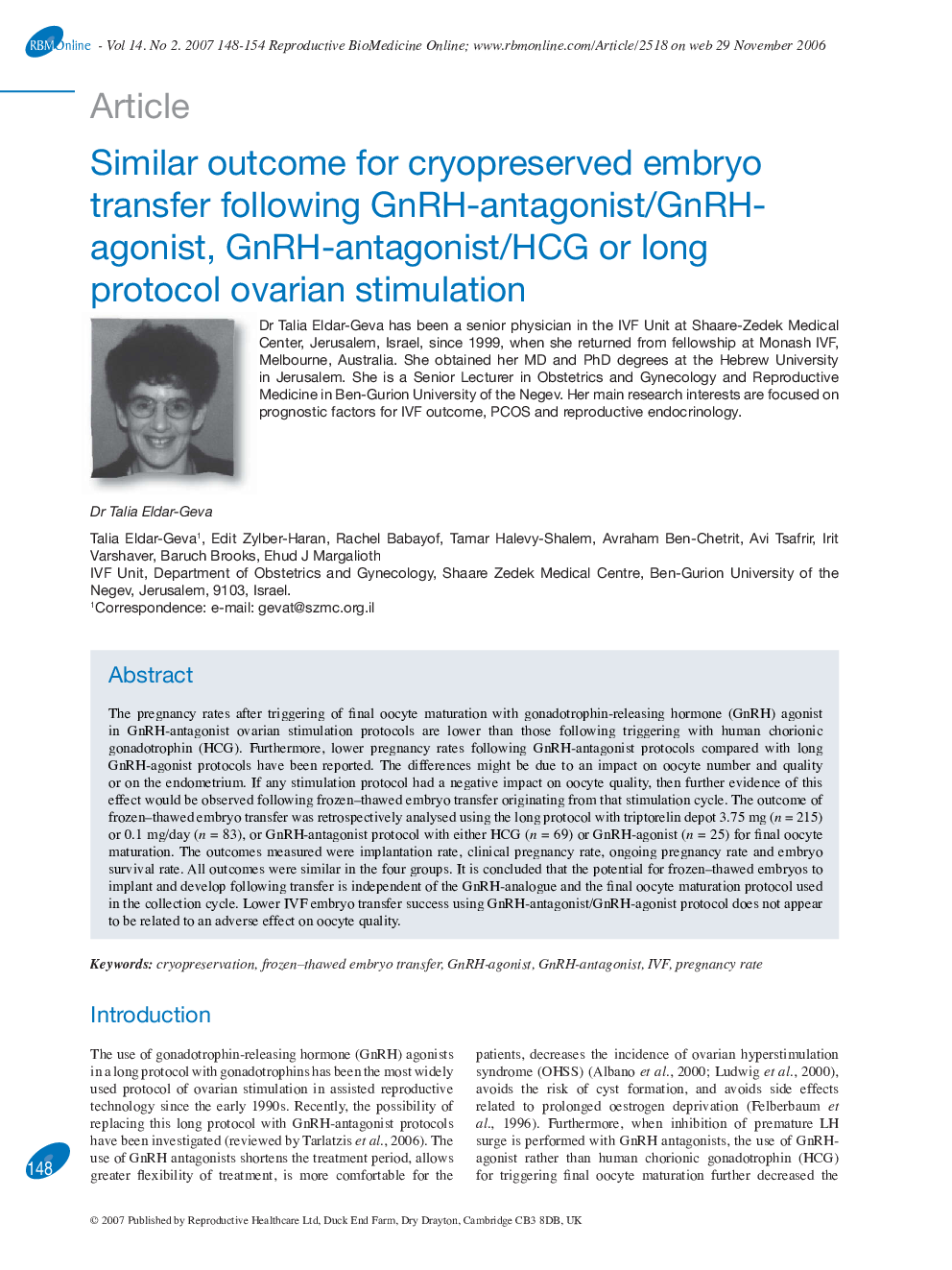| Article ID | Journal | Published Year | Pages | File Type |
|---|---|---|---|---|
| 3973221 | Reproductive BioMedicine Online | 2007 | 7 Pages |
The pregnancy rates after triggering of final oocyte maturation with gonadotrophin-releasing hormone (GnRH) agonist in GnRH-antagonist ovarian stimulation protocols are lower than those following triggering with human chorionic gonadotrophin (HCG). Furthermore, lower pregnancy rates following GnRH-antagonist protocols compared with long GnRH-agonist protocols have been reported. The differences might be due to an impact on oocyte number and quality or on the endometrium. If any stimulation protocol had a negative impact on oocyte quality, then further evidence of this effect would be observed following frozen–thawed embryo transfer originating from that stimulation cycle. The outcome of frozen–thawed embryo transfer was retrospectively analysed using the long protocol with triptorelin depot 3.75 mg (n = 215) or 0.1 mg/day (n = 83), or GnRH-antagonist protocol with either HCG (n = 69) or GnRH-agonist (n = 25) for final oocyte maturation. The outcomes measured were implantation rate, clinical pregnancy rate, ongoing pregnancy rate and embryo survival rate. All outcomes were similar in the four groups. It is concluded that the potential for frozen–thawed embryos to implant and develop following transfer is independent of the GnRH-analogue and the final oocyte maturation protocol used in the collection cycle. Lower IVF embryo transfer success using GnRH-antagonist/GnRH-agonist protocol does not appear to be related to an adverse effect on oocyte quality.
